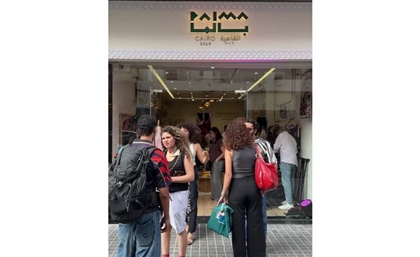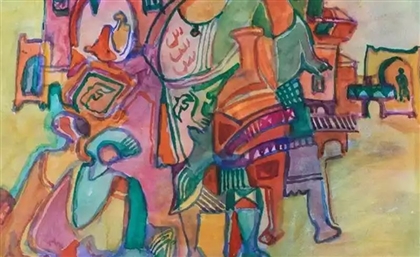This Design Hotel in Palma Was Once a 12th-Century Islamic Palace
A minimalist hotel shaped by centuries of conquest, collapse, and quiet restoration in the heart of Palma de Mallorca.
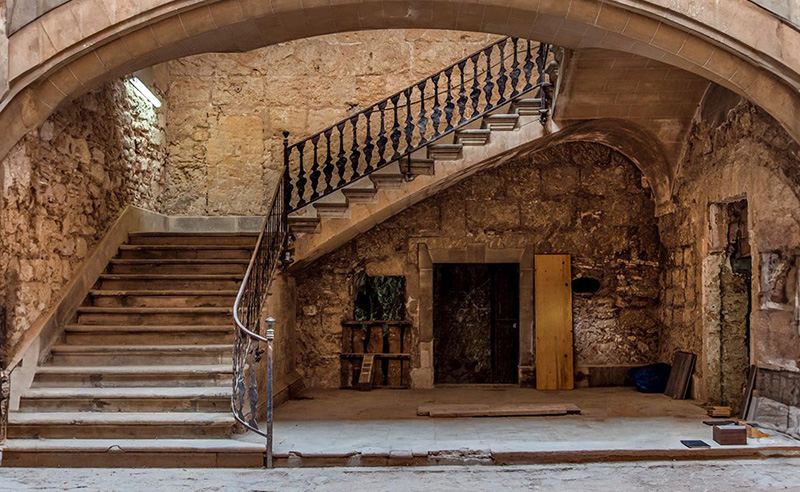
An orange dusk falls across two narrow courtyards framed by stone arches and worn brick. Shallow alcoves channel light onto a low rectangular pool once used for ablutions. On Carrer de les Caputxines, a 12th-century Islamic palace has become Nobis Hotel Palma, and its history reveals itself at every threshold.
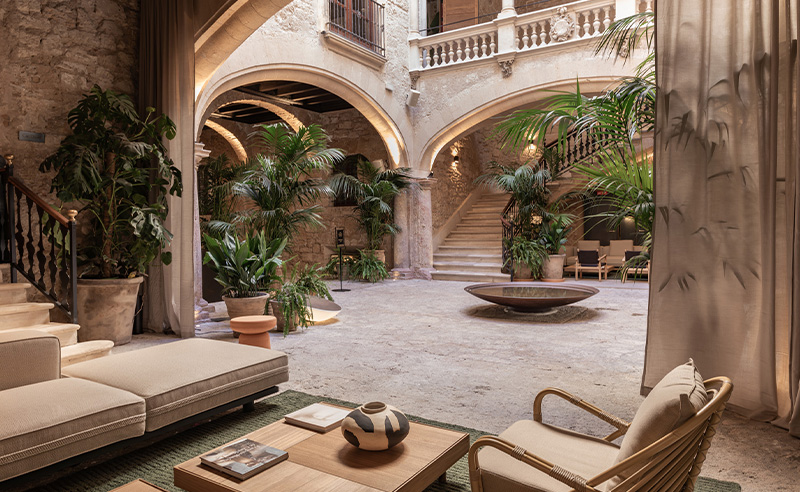
This was once an almudaina, a fortified urban palace from Mallorca’s Islamic period, when the island was part of al-Andalus, ruled by the Almoravids and later the Almohads. Architecture here echoed North African traditions—introspective, water-centered, shaped by geometry and calm. The palace’s layout survives: two matching patios ringed by arcades. Vaulted ceilings span the galleries. In the reception hall, a wooden alfarje ceiling carries simple geometric carvings and inscriptions in Naskh script. Today, these details hint at a past that endured fire and earthquake without embellishment.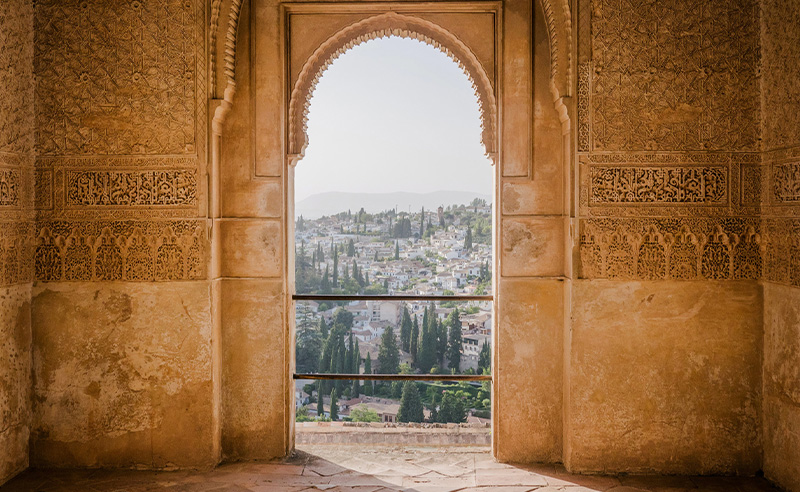
After 1229, Christian forces repurposed the palace as a fortress. At the close of the 13th century, King Alfonso III ordered much of it razed; for a century, only ruins remained. Noble families later converted the site to residences, first adding pointed arches and slender windows in a Gothic phase, then introducing carved plaster details in the 17th-century Baroque style.
The latest transformation unfolded under Jordi Herrero Arquitectos and Eduardo García Acuña, working with Sweden’s Wingårdhs team—Gert Wingårdh and Helena Toresson. They chose restraint over spectacle. Exposed stone columns were stabilized, brick vaults uncovered, and the ancient fountain repurposed as a still dipping pool. Into this backdrop arrived oak furnishings with clean lines, leather chairs, wool throws in muted shades, and a handful of contemporary art pieces—iron abstractions and blown-glass forms that seem to crop up from the stone itself.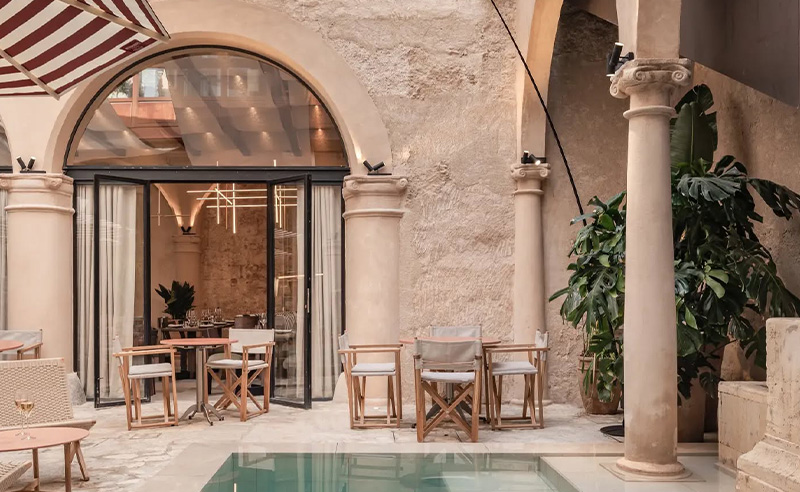
Thirty-seven rooms occupy the palace’s irregular shape. Some lie beneath original beams; others occupy former servant quarters where light reached only through grilles. Limestone walls serve as pale canvases for beds dressed in crisp linens. Handcrafted pillows and deep-set windows redirect morning sun toward distant cathedral spires. Bathrooms open onto tiny terraces—enough space for a single chair and a morning pause.
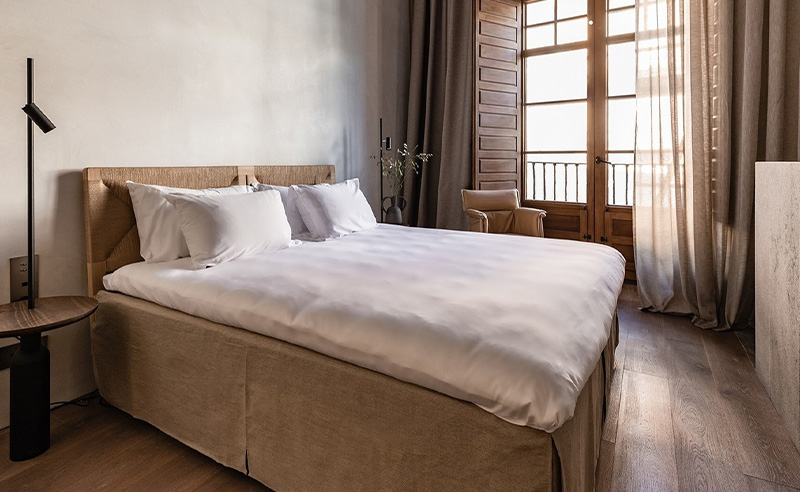
Two suites perch atop the tiled roofs. Private terraces frame La Seu’s soaring silhouette, its Gothic ribs calling attention to dawn’s first light. Inside, low sofas and soft carpets reinforce the sense of calm. After dark, floodlights outline the cathedral’s form while tiles below glow faintly.
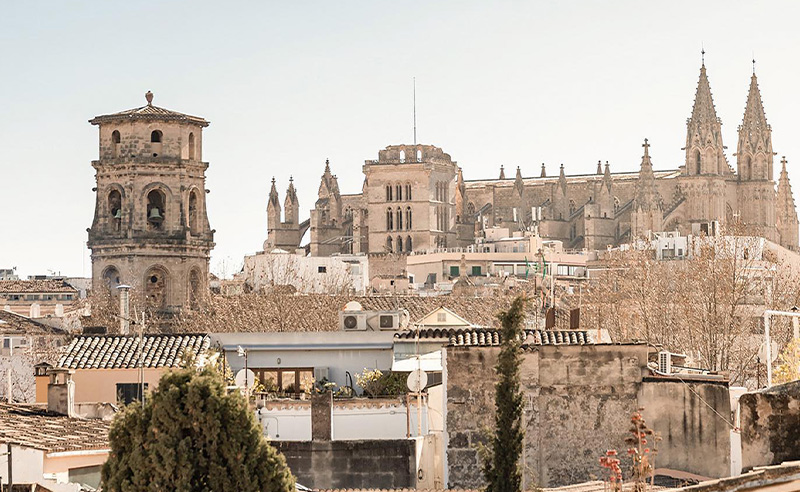
On the ground floor, a former grand hall now functions as a bar. Nine-meter ceilings tower over stone walls, still etched by time. A fragment of 15th-century fresco—red ochre barely visible—occupies one corner. Cocktails reference local flavors: citrus from nearby orchards, herbs gathered on Tramuntana slopes. Drinks arrive in simple glassware, accompanied by quiet conversation and the gentle rattle of ice.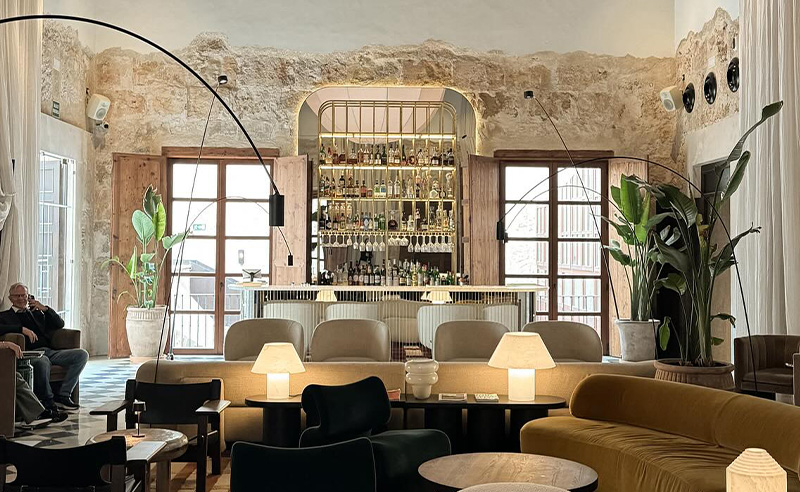
NOI restaurant occupies another vaulted room. Tables cluster around slender columns; linen napkins fold at each setting. Chef Xema Álvarez prepares dishes that reflect Mallorca’s fields and coasts—grilled vegetables tossed with wild herbs, fish paired with almond purée, cheeses drizzled with island-pressed honey. A small window offers glimpses of a kitchen where copper pots hang in neat rows and chefs move with deliberate purpose. (1)-b6f61aef-86cd-4185-b480-4b279a28b11c.png)
Below one courtyard, a spa occupies a former escape tunnel. Low brick vaults and narrow passages corral steam among stone benches. Treatment rooms press against the walls, each lit by a single recessed light. A shallow indoor pool follows the tunnel’s curve. Heat and humidity combine in a hush that contrasts with the city’s bustle above.
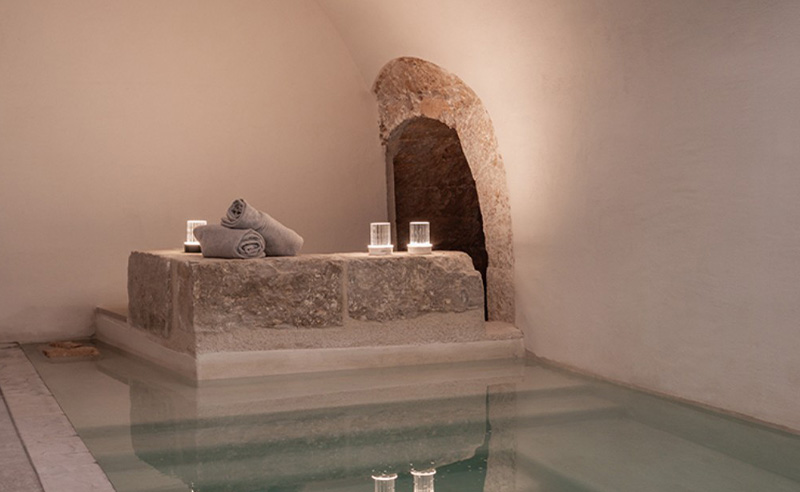
Next door, a 14th-century church occupies a narrow lot, its facade partly veiled by a wrought-iron gate. Streets radiate outward from the cathedral plaza—cafés with wicker seats spilling onto sidewalks, shops where artisans carve olive wood into spoons and small figures. In this quarter, layers of history sit side by side: Roman columns repurposed in Baroque doorways, Arabic inscriptions tucked above Gothic arches.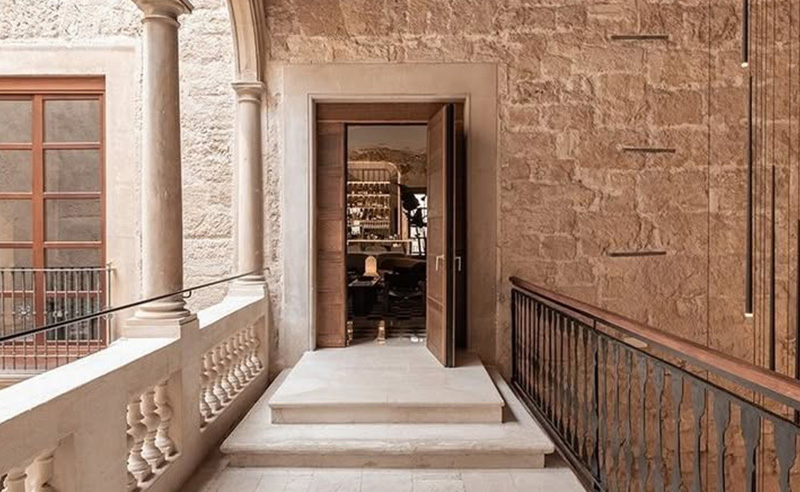
In the calm of Nobis Hotel Palma, these echoes find new resonance—not in grandeur, but in stillness. History lingers here not as spectacle, but as shadow and texture, folded quietly into every surface.
- Previous Article Over Half of Egyptian Households Live in Rural Areas
- Next Article Six Unexpected Natural Wonders to Explore in Egypt
Trending This Week
-
Dec 23, 2025








